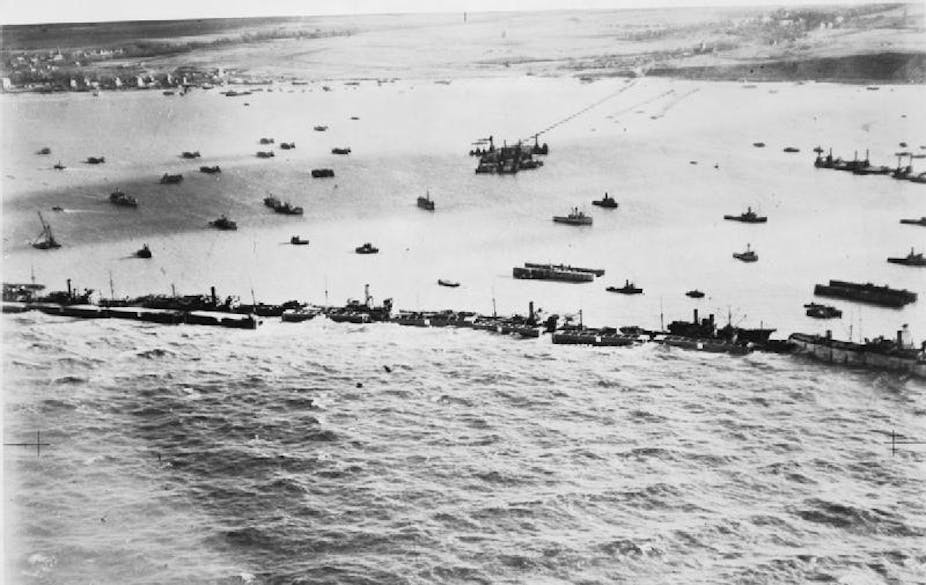The Allies were faced with a challenge since the Germans spent their time in France transforming ports into their own fortresses. This allowed the Germans to have protection from attacks out of the sea or air. In order for the Allies to land all of their men and supplies, they needed artificial harbors. They used these harbors on D-Day, and were successful. Two harbors were created to support the Allies during its invasion of Normandy, France. These harbors became code-named "mulberries" so that there was no suspicion to be had.

The idea for Mulberries came after a failed British attack on a German port, demonstrating to the Allies that it would be useful to have a way to transport supplies to the beach during an invasion. The primary use of Mulberries was to protect supply ships on the Normandy Coast.
The Mulberries were concrete blocks to make up the foundation of the ports, breakwaters, and pontoons for anchoring the ships and dropping off cargo. Each block of concrete weighed between 1,500 and 6,000 tons. Because of this, 40,000 British military engineers constructed the Mulberries. The components of the Mulberries were produced in Britain and traveled to the Normandy coast to do the final assembly.
The two Mulberries created for D-Day were called Mulberry A, which would aid US forces, and Mulberry B, which would aid British and Canadian forces.
The use of the Mulberries derived various impacts. For instance, within 10 months after D-Day, Mulberry B landed 2.5 million troops and 500,000 vehicles. They were also seen to have shortened the war by increasing the efficiency of providing supplies to the troops.
https://www.historic-uk.com/HistoryUK/HistoryofBritain/DDay-Mulberry-harbours/
https://www.ice.org.uk/what-is-civil-engineering/what-do-civil-engineers-do/mulberry-harbours
https://www.wearethemighty.com/history/mulberry-harbor-d-day-engineering
I found your post really interesting! I went and read some statistics on what these Mulberries were capable of, as they were a crucial aspect of the war. As you wrote in your post, each concrete block weighed from 1,500 tons to 6,000 tons, which made the total weight of the Mulberry around 631,000 tons with 275,000 cubic meters of concrete. A piece of infrastructure that big took 132 tugs to pull it across the channel for assembly. I also found out that at maximum capacity, Mulberry B could unload around 6,750 tons a day, and a truck or vehicle could be unloaded from a Mulberry every minute and sixteen seconds. This speed and efficiency in unloading allowed for millions of troops and tons of supplies to land safely. Without these Mulberries, the Allied powers would not have been able to send in their troops on D-Day or supply their troops throughout the war.
ReplyDeletehttps://www.forces.net/d-day/mulberry-harbours-how-allies-floated-concrete-win-d-day
https://www.wearethemighty.com/history/mulberry-harbor-d-day-engineering?rebelltitem=5#rebelltitem5